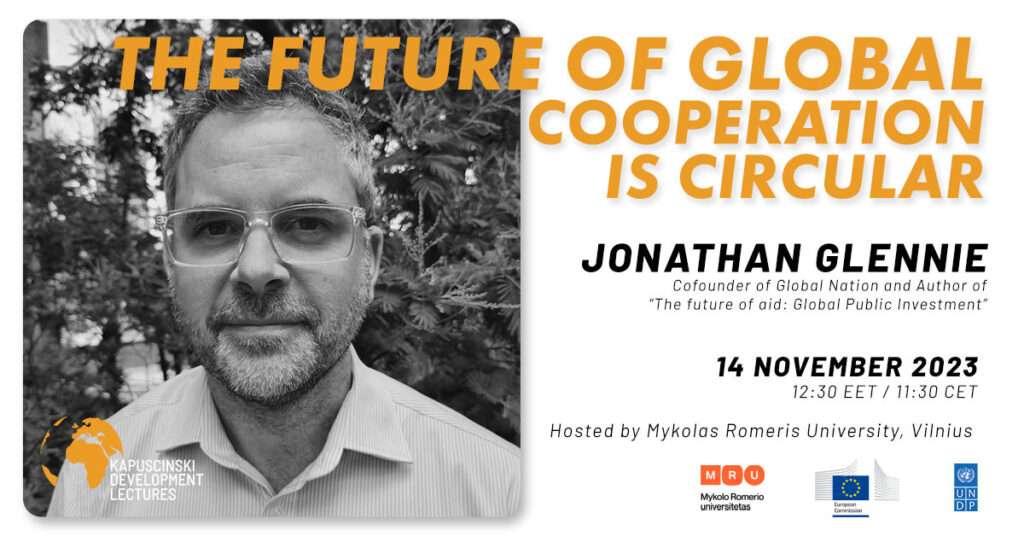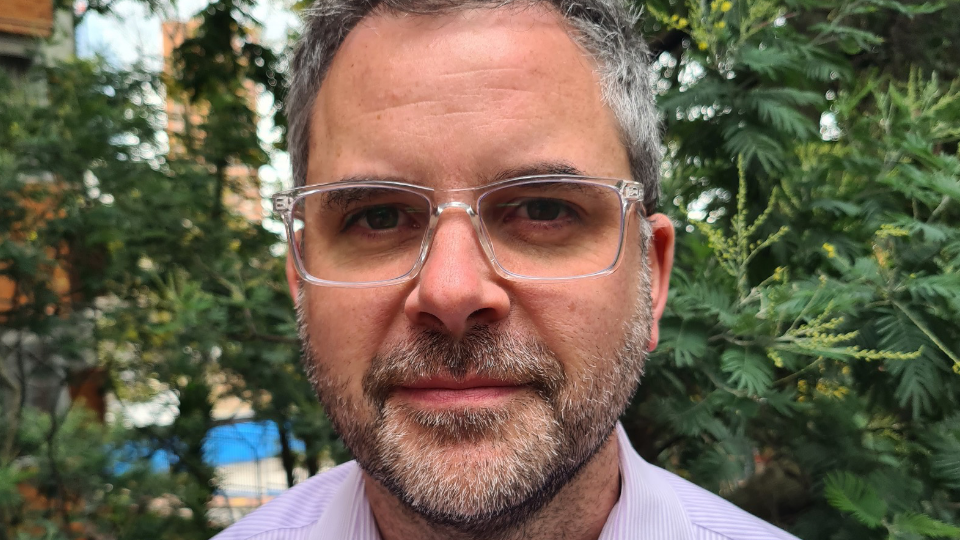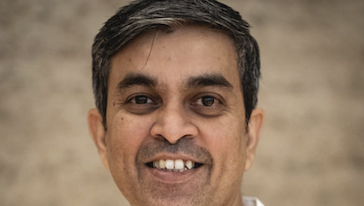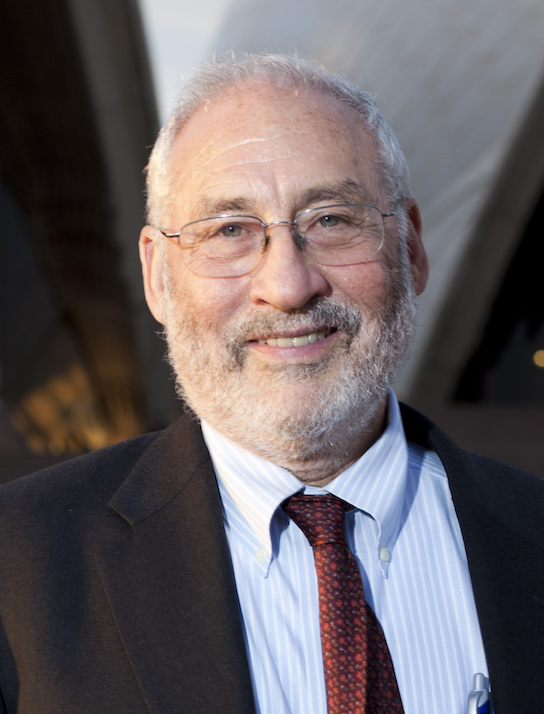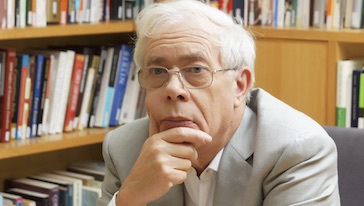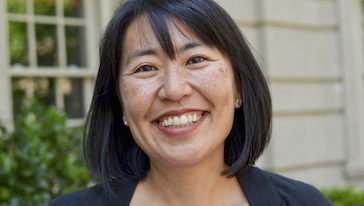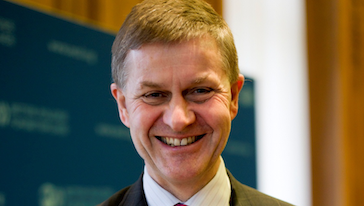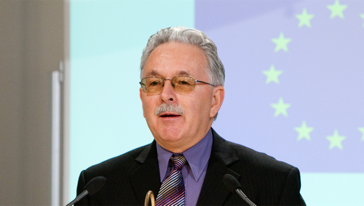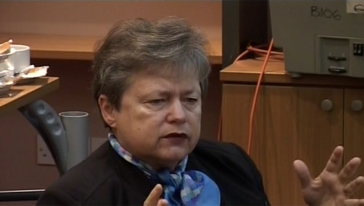During the lecture, professor Hulme introduced ideas from his recently published book “Just Give Money to the Poor”. In this book he describes a different way of development aid; he called it “a development success story.” Many parts of the book are available on the Brooks World Poverty Institute website.
Cash transfers or broader concept of how social protection is provided for the populations has been slowly spreading across the world. It is not mentioned in the Millennium Development Goals. However, this concept is rapidly growing and in 2010 at „MDGs + 10 meeting” which was held in New York, there were frequent references to the need for cash transfers, to having social protection and social platforms for population. These days’ cash transfers are used by more than 110 million families in at least 44 countries; that is approximately 750 million people benefiting from cash transfers in low income and middle income countries. This number even increases as China introduces this concept, too. So, it may reach 1 billion people in low income and middle income countries. The ideas and impetus to introduce cash transfers have not come from aid donors or rich world, but it has came from the Global South, more specifically South Africa, Brazil, Mexico, India, followed by Indonesia and China. Professor Hulme stressed the need for political consensus in order to promote these programs; politics and cash transfers have to go hand in hand.
Professor Hulme introduced what he was going to talk about. The message was 4 findings, 2 debates and 5 principles. The findings are that recipients in low income and middle income countries use money well, although these are only small sums of money. It is also an efficient means of reducing poverty in a short term. People can increase household income, reduce hunger, improve nutrition and get children go to school. However, there are also long term benefits. This concerns literacy, physical well being of children and of populations. Cash transfers can also contribute to the economic growth and make it more pro-poor. There is also some evidence that it can help with the political evolution of countries. Professor Hulme mentioned affordability of cash transfers, too. He argued that it can be afforded on a modest scale and then it can be developed over time.
Professor Hulme introduced two debates, about conditions and targeting. There are two kinds of evidence. Both, conditions and targeting can be good and bad. So, it needs to be debated and it has to be approached very contextually. One has to think about the country, locality and objectives of the programme. These programmes of cash transfers can go ahead if they are fair, assured, practical, make a difference also with a small amount of money and if they are popular in political terms.
Cash transfers are payments which are regular (people get them on a regular basis, usually monthly), long-term (people can get them for a few years or for a whole life), rights based (people are entitled to have them, it should not just be a charity) and tax-financed (ideally financed from the domestic tax, donors can help in establishing the schemes and financing them in the early years). They should be a form of a social assistance not a social insurance or a labour market regulation.
There are 5 types of cash transfers: social pensions (people are entitled to get them reaching a certain age), child benefits (e.g. in Southern Africa countries), family grants (for poorest families), disability allowances (in African and Asian countries), and cash for work programs (people get money for working on public works such as in India).
South Africa is a good example to be used as a case study. It has social pensions and child benefits. Around 2,3 million people, this is 85% of people aged over 63 get the social pension although they have not contributed to it. Child benefits have expanded a lot over the last four years. 8,5 million people receive them which is over 55% of children under the age of 16. In this case, there is targeting, but it is unconditional. Although, it is a big sum of money (3,5% of the GDP), there are benefits of reducing poverty in a short term. These schemes are diffusing across the Southern African region. Namibia, Lesotho and Botswana already use the scheme of social pensions and there are other countries in the region which are considering their introduction. Professor Hulme noticed that South Africa has enormous problems with not generating employment, so the cash transfers are not enough in themselves. Other fundamental changes in the macroeconomic structure are needed.
Another example, which professor Hulme used, was Brazil. He introduced the scheme of Bolsa Familia which goes to around 11,6 million families with per capita income under 30% of minimum wage, so it is targeted and there are conditionalities, too. Social pensions go to 6,6 million of people. So, all in all, 39% of the population gets cash transfers (it is 1,5% of its GDP). Brazil has had excellent economic growth over the last ten years, and inequality and poverty has reduced.
Results of many studies showed that poor use money wisely, mainly on family, that there are benefits for the next generation (regarding nutrition, education, etc.) and it does not discourages the work. Cash transfers can offer short-term and long-term benefits. Concerning short-term benefits, the grants are used by whole family, around a half of it is spent on more and better food, children are taller and healthier with increased school attendance and higher potential to learn, and it contributes to the reduction of inequalities, e.g. in income, food consumption and access to education. The most important long-term advantages are that the money is spent locally. Other people are probable to get employment as money is spent for buying local. So, it stimulates the local economy, it increases investments and it encourages job seeking.
There is an existing stereotype that cash transfers make people lazy. Professor Hulme argues that it is not true. He said that cash transfers provided a necessary base for poor people. They know how to invest money locally to have a profit. The problem is that they lack cash to take opportunity. Cash transfers also reduce risk aversion. Poor people are conservative about taking risk. But households which get cash transfers can think about taking small risks. Closely related to risk is also planning. Risk represents an enormous problem for poor families; very often they would face questions such as will my family starve if I try a new crop and I fail? Should I risk buying a fertilizer? Or, can we afford a bus fare to look for the job? Therefore, cash transfers are very important, because they represent a guarantee of the future income, it permits risk taking and it provides a sort of insurance in the case of failure. Cash transfers also allow small farmers and entrepreneurs to take a micro-credit, because in the case of failure it may be paid by cash transfers.
There are 4 assumptions that have to be taken into account if the political leaders or aid donors decide to implement this strategy. Is poverty partly caused by lack of predictable income? Are opportunities available? Can we trust poor? Is giving money to the poor ethically right? Professor Hulme thinks that if cash transfers are applied contextually the answer to all the questions is yes and therefore cash transfers should be introduced.
There has been a change in the elite or middle class attitudes in the last decade in developing countries. There is a gradual rejection of the attitude that growth is enough, that the poor are lazy, that we cannot afford welfare or social protection. And there is an increasing consensus that if a country wants to have national development, there is a need for growth, human development and human security. It is accompanied by understanding that poor are good “economists”. A very important fact is that costs of social protection constitute only 0,5 -2,0 % of GDP and therefore it should not represent a real problem for the economy.
Among scholars there are 2 ongoing debates: conditions and targeting. There are arguments for and against conditions. In Mexico, there are highly conditional programs. In South Africa, programmes are unconditional. Arguments for are that one can improve the long-term impacts and change the culture of certain social groups. On the other hand, paternalism and low quality of existing services are main arguments against conditions.
Targeting is the second part of the debate. If you target you can give money to those who need it most. Targeting is different from country to country as well as from program to program, i.e. South Africa: pension is untargeted; meanwhile child benefit is targeted on poorest half. Arguments against targeting are that it is difficult to do it accurately, it is divisive and may be seen as unfair, it brings opportunities for corruption or manipulation and it represents additional administrative costs. The problem with targeting is also when you try to target the poorest of poor, i.e. in Africa it has proved to be problematic as people can say “we are all poor”. Professor Hulme in this case emphasized the necessity to apply contextual knowledge and to avoid taking extreme sides for or against it.
Cash transfers need to be seen as fair. This means that most citizens must agree on “who gets grants”. They need to be assured on a weekly basis, a monthly basis or annually. It needs to be practical, so you have to be able to deliver it. It needs to be more than a few cents. It should make at least 20% of poor household income. And finally, they should be popular and politically acceptable. Politicians, middle class and elites should support them. They should not just be a single programme, but they should become a part of an evolving social policy framework.
Professor Hulme thinks that cash transfers provide immediate poverty reduction and social protection; they may increase good governance and reduce risk. They increase investments and impact next generations. They are a necessary step on the way to a national welfare system. However, it must be seen as developmental, not as safety nets. Therefore, the main message is to give money to the poor. However, not as a charity or out of helicopters, but as a carefully designed programs deriving from national decision-making and experience and there is a role for donors and international agencies to support it with cross-national learning, help countries to recognize the affordability and joint financing, particularly in low income countries in Africa.
